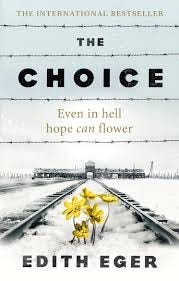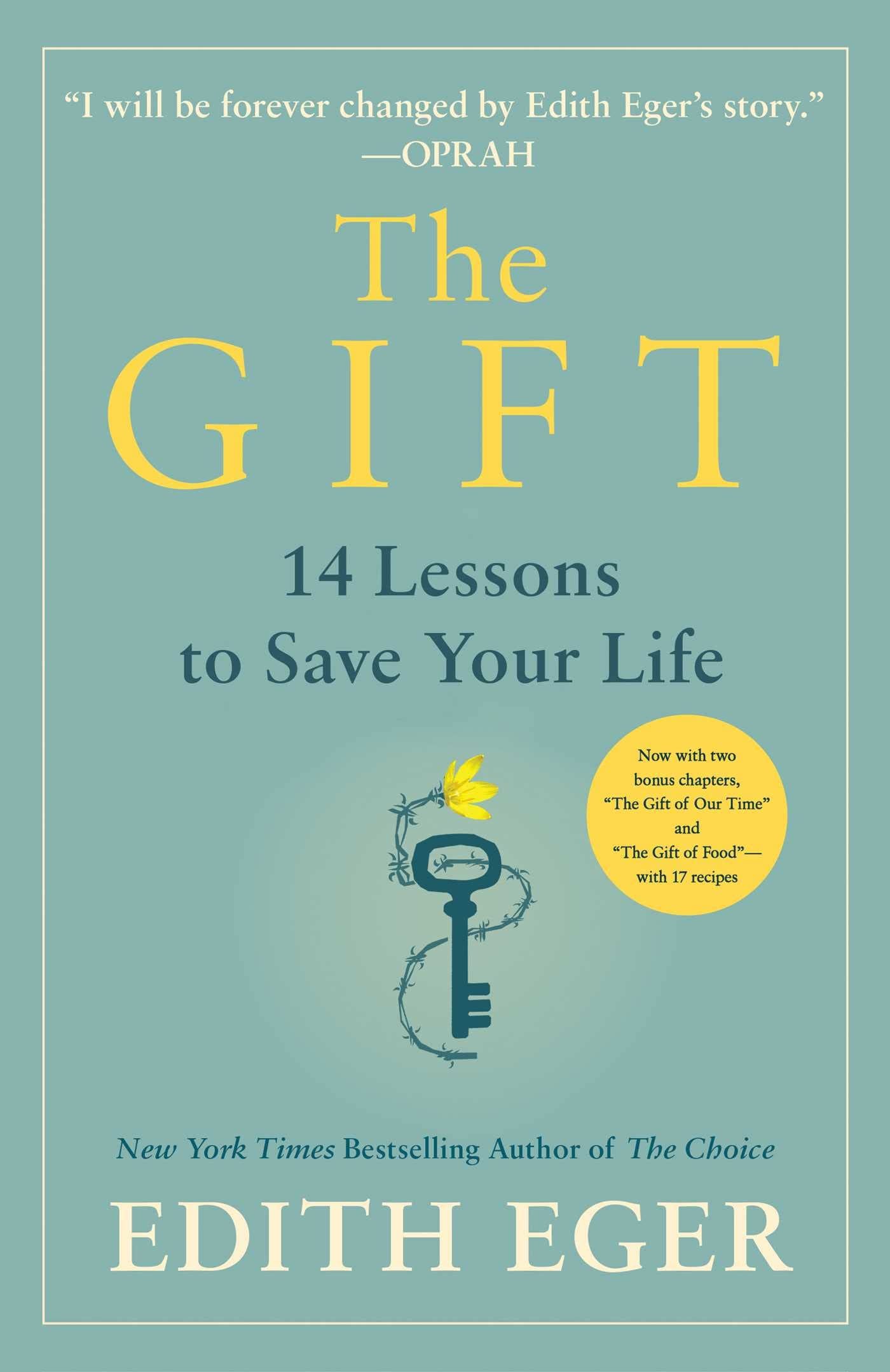Edith Eger #2: Choose Hope
How does a sixteen-year-old girl find strength in a place designed to destroy it? It's all about hope.
Hope is the awareness that suffering, however terrible, is temporary; and the curiosity to discover what happens next.
Edith Eger
Reminder: This is article #2 on my special series about Edith Eger. Check previous posts to know the whole story.
By the time Edith Eger had been in Auschwitz for just a few days, the Nazis had succeeded in stripping away nearly everything that defined her existence. Her mother? Gone. Her father? Gone. Her grandparents, friends, and boyfriend—all murdered. Her home, her dreams, and her very identity as a sixteen-year-old girl with a bright future—all were systematically erased.
But the true horror of Auschwitz wasn't just what they took from you upon arrival. It was what they did to you every single day afterward. Consider what a normal day in Auschwitz looked like for Edith:
Dawn brought terror: Edith's day began before sunrise with the piercing sound of whistles and shouting guards. Roll call (Appell) started at 4:30 AM, forcing prisoners to stand in rigid formation sometimes for hours in the freezing cold or scorching heat, often while SS officers conducted lengthy counts and selections. Those who collapsed from exhaustion were beaten or shot on the spot.
Starvation was systematic: Breakfast consisted of watery coffee with a small piece of bread that had to last the entire day. This meager ration contained barely 200-300 calories—a fraction of what the human body needs to survive. Edith's body, began consuming itself, her muscles wasting away as her ribs became visible through her skin.
Work meant torture: After roll call, Edith was assigned to grueling work details that could include carrying heavy stones and building materials, digging ditches in harsh weather conditions, and sorting through belongings of murdered prisoners.
Death was everywhere: Throughout the day, the threat of death loomed constantly. At any moment, prisoners could be sent to the gas chambers, shot, or beaten to death. Edith witnessed friends and fellow prisoners disappear without warning.
With her past destroyed and tormenting her, the present like hell itself, and the future not guaranteed for even the next hour, several crucial questions arise:
What made her continue? Why did she choose to survive when death would have been easier? What made her refuse to give up?
It all came down to a single choice—the choice to remain human when everything around her was designed to make her forget what humanity meant. The hope that one day, Edith and her sister Magda would survive.
In the face of absolute evil, Edith chose hope.
When hope saves your life
Consider floating on a river. When the current flows with you, you advance effortlessly. But when the current turns against you—that's when you need true strength. Anyone can float downstream, but it takes real work to swim upstream.
This captures what happened in Auschwitz. Prisoners like Edith faced currents so brutal that survival required unimaginable strength. Hope became their lifeline—the fuel needed to keep swimming upstream.
Hope in Auschwitz was so crucial that here's what happened when prisoners lost it.
Between Christmas 1944 and New Year's 1945, the death rate in the camp spiked dramatically. Why? It would be reasonable to think this phenomenon was due to food shortages or worse conditions, but nothing could be further from the truth. Shortly before Christmas 1944, rumors spread that the Nazis were losing the war and that Auschwitz would soon be liberated. For prisoners—especially those who had been there for years—there wasn't much energy left in the tank, but these rumors injected in them a sense of hope.
The majority of prisoners had lived in the naive hope that they would be home again by Christmas. But as the holiday approached and passed with no liberation and no improvement in their circumstances, most of these prisoners began to give up.
As the time drew near and there was no encouraging news, the prisoners lost courage and disappointment overcame them. When prisoners pinned their hopes on a specific date—being home by Christmas—and that hope was crushed, their will to live collapsed with it. The mind gave up, and the body followed.
They literally died because they lost hope. They were so excited about being released that when they realized they weren't going anywhere, they could not find the strength to keep going.
Edith Eger also observed this phenomenon. Viktor Frankl, a psychologist who endured the same horrors in Auschwitz, witnessed it too. He went further to define it as the "will to meaning"—the psychological fuel that kept prisoners swimming upstream against impossible currents. Frankl wrote that those who could find meaning in their suffering, who had a "why" to live for, could endure almost any "how."
The message here is clear: your mindset shapes your reality. Be careful which thoughts you hold in your mind, as they may define what actually happens in reality.
And this is exactly why we need hope. Hope is one of the most important psychological traits when it comes to resilience and endurance.
But what is hope?
Hope is an active choice, not a passive wish
Some people think hope means that everything in life is going to be fair and good and easy. But as Edith explains, this is not hope, it’s idealism — a defense mechanism, just like denial or delusion.
True hope, as Edith discovered, is far more powerful and realistic. As she explains:
Hope is the awareness that suffering, however terrible, is temporary; and the curiosity to discover what happens next.
Edith teaches us that hope acknowledges that life is full of darkness and suffering—and yet maintains that if we survive today, tomorrow we might be free. Hope doesn't promise that everything will work out perfectly.
Edith never denied the horror surrounding her. She didn't pretend Auschwitz wasn't happening or minimize its brutality. Instead, her hope was built on a foundation of brutal honesty about her circumstances combined with an unshakeable belief in a fundamental truth: suffering, however terrible, is temporary.
For Edith, hope wasn't just a feeling—it was the conscious decision to remain curious about what comes next, even when everything around us suggests giving up. It’s an active choice that requires courage and intentionality—a recognition that while we cannot control what happens to us, we can always choose how we respond, and in that choice lies the seed of transformation and healing. As she puts it:
If we decide something’s hopeless or impossible, it will be. If we take action, who knows what we might manifest? Hope is curiosity writ large. A willingness to cultivate within yourself whatever kindles light, and to shine that light into the darkest places.
Unlike the optimists who died of broken hearts when Christmas 1944 passed without liberation, Edith never set specific dates for her rescue. Instead, she combined absolute faith in her ultimate survival with complete acceptance of her current brutal reality. Resilience is a mental state.
She didn't deny the horror of Auschwitz or pretend it wasn't happening—she faced it head-on while maintaining her inner conviction that "everything is temporary and I can survive."
Rather than attaching her hope to external events, specific dates, or rescue fantasies. She didn't waste energy on false hope or unrealistic expectations. Instead, she channeled her mental resources into confronting each day's challenges while holding onto an unshakeable belief that she would ultimately transcend her circumstances.
When faced with uncertainty, we stand at a crossroads. We can choose fear, allowing it to paralyze us and narrow our vision. Or we can choose hope—the active ingredient that keeps us engaged with life even in our darkest moments.
Hope tells us that life is full of darkness and suffering—and yet if we survive today, tomorrow we’ll be free.
How to practice hope
Whatever challenges you face in your own life, remember that how you look at things vastly shapes your reality. Your choices matter. They really do.
In Auschwitz, Edith's hope manifested in small but crucial ways:
Choosing to share her meager bread ration with her sister.
Maintaining her inner conviction that "everything is temporary and I can survive".
Refusing to let the Nazis strip away her humanity.
Finding moments of beauty even in hell—like dancing for Dr. Mengele to save her life.
When you suffer and consider giving up, remember the river analogy. Anyone can float downstream, but it takes real work to swim upstream. Be the person who shines when swimming upstream.
When you face your own impossible moments, remember Edith's truth: hope isn't about believing everything will be easy—it's about choosing to remain curious about what’s next, even when right now feels unbearable.
To practice hope, start with this small tips:
Choose hope as an active practice, not a passive wish.
Focus on improving today rather than setting unrealistic timelines.
Accept your current reality while maintaining faith in future possibilities.
Remember that all circumstances are temporary.
Cultivate curiosity about what might unfold next.
The choice, as always, remains yours.
But how does someone actually survive when hope alone isn't enough?
In our next post, we'll discover the harrowing final months of her imprisonment—how she literally danced with death to save her life, survived a death march across frozen Europe, and finally earning her freedom. You'll learn that liberation came with a price she never expected to pay.
To learn more about Dr. Edith Eger's extraordinary journey, read her powerful memoir "The Choice" and "The Gift," or listen to her interviews on various podcasts where she continues to share her wisdom about healing, hope, and human resilience.





